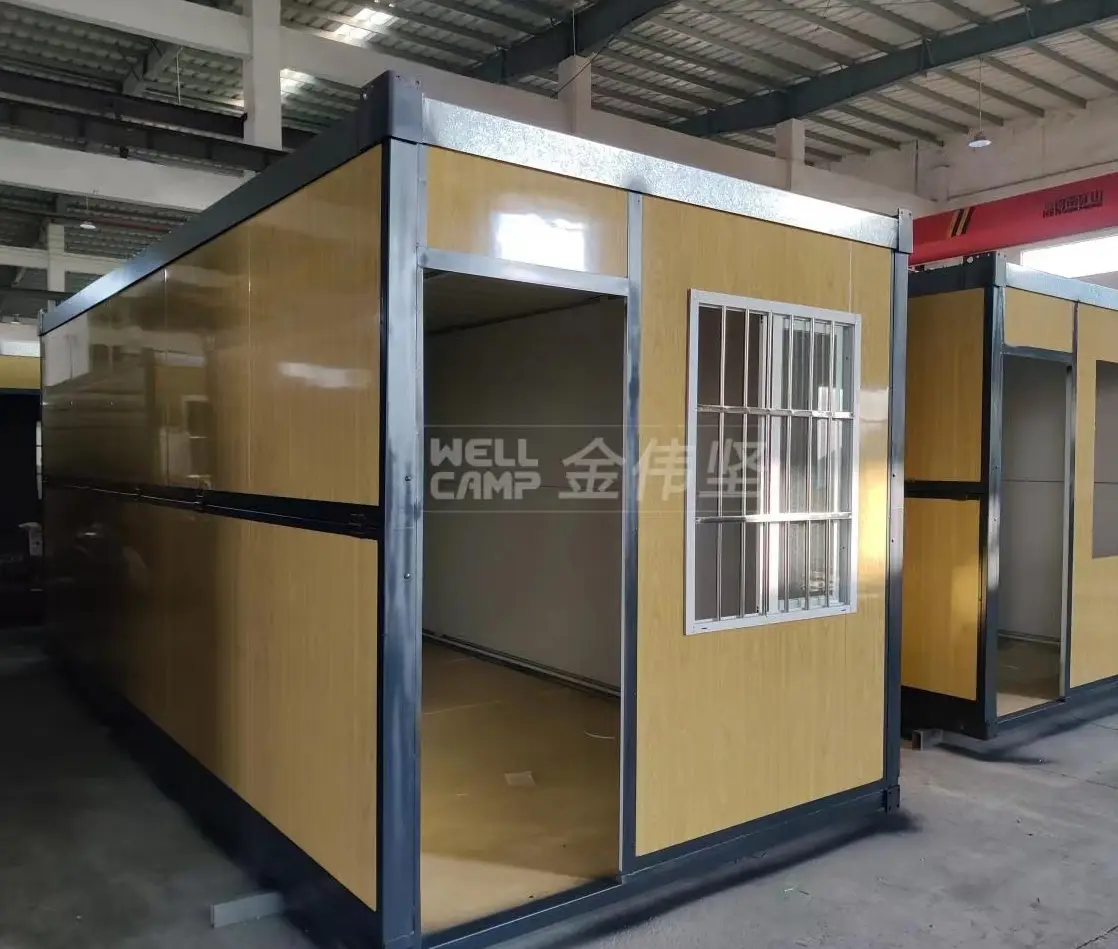How Do Foldable Containers Function? Core Principles Explained
Imagine a storage solution that can be compressed into a fraction of its original size, reducing the space it occupies by up to 90%. This revolutionary technology is not just a theoretical concept; it's a practical solution that's already transforming various industries. Foldable containers are designed to collapse into a more compact form when not in use, making them a game-changer in storage and transportation.
Foldable containers are increasingly used in logistics, construction, emergency response, and personal storage. For instance, in the logistics industry, companies like Navlandis have pioneered the development of foldable containers like the Zbox, which have demonstrated remarkable reductions in both emissions and costs on certain routes. Here, a foldable container can save up to 95% of the space traditionally occupied by a conventional container, making it a viable solution for businesses aiming to optimize their space and reduce costs.
Understanding the Mechanics of Foldable Containers
The core principle of foldability lies in their engineering design. These containers are built with a system of hinges and joints that allow them to fold both vertically and horizontally. The hinges are typically made from high-strength stainless steel or aluminum to ensure durability and longevity during the folding and unfolding process. This clever engineering not only maximizes space efficiency but also maintains the structural integrity necessary for safe transport.
To further illustrate, let's take a closer look at the folding mechanism. The hinges are strategically placed to withstand repeated cycles of compression and extension, allowing the container to fold down to a quarter of its original size. This folding process is facilitated by robust joint mechanisms that ensure smooth operation and prevent fatigue or failure over time.

Benefits of Using Foldable Containers
Foldable containers offer numerous advantages, chiefly space efficiency. By folding into a compact size, these containers optimize storage in warehouses and reduce the need for empty container transportation. For example, a logistics company could save thousands of dollars by reducing the number of storage units needed and decreasing transportation costs.
Moreover, the environmental impact is significant. According to a study by Green Logistics, the use of foldable containers can reduce CO2 emissions by up to 30% compared to traditional containers. This is not just a theoretical reduction; companies like Navlandis have already demonstrated these benefits in real-world scenarios. For instance, a manufacturing plant that employs foldable containers in its supply chain can significantly lower its carbon footprint and reduce energy consumption.
Foldable Containers in Different Industries
The versatility of foldable containers extends beyond logistics and supply chain management. They are increasingly being used in personal and household storage solutions, offering a flexible alternative for those with limited space. For example, office and home storage units can be designed with foldable shelves and compartments to maximize available space.
In the logistics industry, companies like Navlandis have pioneered the development of foldable containers like the Zbox, which have demonstrated remarkable reductions in both emissions and costs on certain routes. These containers are also being used in construction, where they can be easily transported to and from job sites, reducing the need for additional transportation.
In the emergency response sector, foldable containers can serve as mobile storage solutions for supplies and equipment. For example, during natural disasters, these containers can be quickly transported to affected areas and then deployed to store critical supplies, including food, medical supplies, and emergency shelters. This adaptability makes foldable containers a valuable asset in various industries.
Comparative Analysis: Traditional vs. Foldable Containers
When comparing traditional containers with their foldable counterparts, several factors come into play. While foldable containers may require a higher initial investment, their long-term cost-effectiveness and versatility often outweigh the upfront costs. For instance, a study by the National Bureau of Economic Research found that companies using foldable containers saved up to 20% on transportation costs over a year.
Additionally, the ease of use and adaptability of foldable designs make them an attractive option for businesses looking to optimize their supply chains. For example, a logistics company that switches to foldable containers can significantly reduce the time and labor required for loading and unloading, leading to increased efficiency and reduced operational costs.
Challenges and Considerations
Furthermore, market adaptation and consumer acceptance are crucial for widespread adoption. As more businesses recognize the benefits of foldable containers, the market is poised for growth. Companies are also working to educate consumers and stakeholders about the advantages of these containers, leading to increased acceptance and adoption.
Future Trends in Foldable Container Technology
The future of foldable containers is bright, with ongoing innovations and technological advancements shaping their development. As more businesses recognize the benefits of foldable designs, the market is poised for growth. Companies like Navlandis are leading the charge by incentivizing the use of foldable containers, offering pricing models based on the savings achieved through their use.
One emerging trend is the integration of smart technologies into foldable containers. For example, Navlandis is developing foldable containers equipped with sensors and IoT capabilities that can track and monitor the condition of the container and its contents. This data can be used to optimize logistics operations and enhance supply chain management.
The Role of Foldable Containers in Modern Storage Solutions
In conclusion, foldable containers represent a significant step forward in modern storage and transportation solutions. Their ability to maximize space, reduce costs, and minimize environmental impact makes them an invaluable asset in various sectors. As the world continues to prioritize sustainability and efficiency, foldable containers are set to play a pivotal role in shaping the future of logistics and beyond.
To wrap up, the adoption of foldable containers is not just a trend but a necessary evolution in the way we store and transport goods. By embracing these innovative solutions, businesses can achieve significant cost savings and contribute to a more sustainable future. Whether you're a logistics manager, a construction site supervisor, or a homeowner looking to maximize space, foldable containers offer a powerful solution for your needs.
